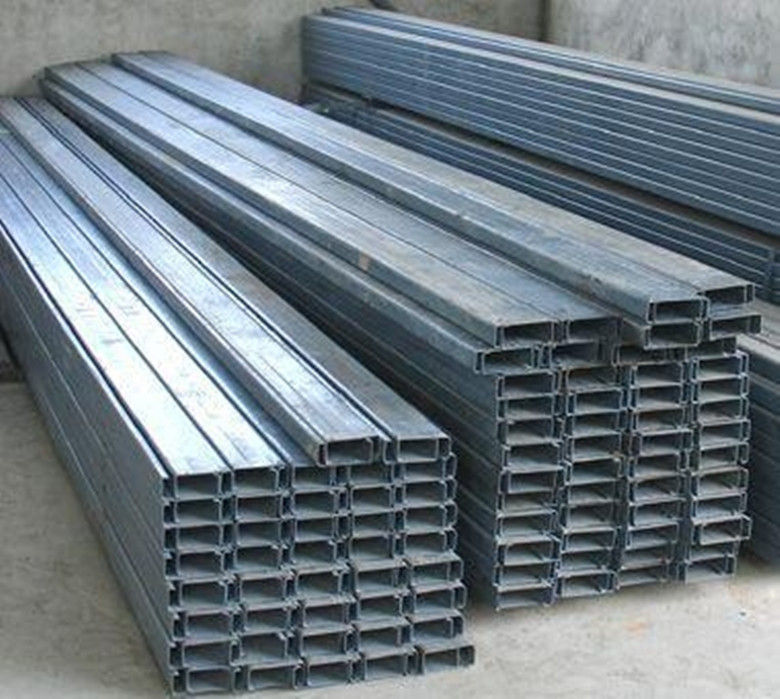Galvanised steel
Contents |
[edit] Introduction
Galvanisation can be used to help prevent steel from corroding. This involves coating steel in zinc. The coating of zinc prevents corrosive substances from reaching the base metal. The zinc also acts as a sacrificial anode, meaning that if the coating is scratched, the remaining zinc will still protect the exposed steel.
The most common method of galvanising steel is hot-dip galvanisation, which involves submerging the steel in a bath of molten zinc.
This form of protection may be insufficient for components exposed to acids such as acid rain, or in a salt environment, such as coastal locations, and for these applications, stainless steel is preferable.
See Stainless steel v galvanised steel for more information.
[edit] Process of galvanisation
The typical process of galvanisation is described below.
[edit] Degreasing
To begin, the steel must be treated and cleaned to remove any scale, rust, oil, paint or other surface contaminants.
[edit] Fluxing
The steel is then immersed in a flux solution. This is usually 30% zinc ammonium chloride with wetting agents, maintained at above 65°C. This helps to prevent further oxidation before the galvanising begins. The steel is then dried.
[edit] Galvanising
The steel is completely immersed in a bath of molten zinc. A uniform coating is produced by the zinc reacting with the steel to form a series of zinc-iron alloy layers. The mass of the steel component being protected will determine the thickness of the layers.
The component is removed from the bath after a period of immersion which varies according to the size and mass. The steel will carry with it an outer layer of molten zinc which solidifies upon cooling to form the outer coating.
Small components such as fasteners can be galvanised by a similar process. They are loaded into perforated cylindrical steel baskets and lowered into the bath. Upon removal, they are rotated at high speeds for 15-20 seconds in a centrifuge which throws off excess zinc and maintains the integrity of the components.
For more, see Galvanising.
[edit] Advantages of galvanised steel
There are several advantages to using galvanised steel:
- It can be more cost-effective than other protective coatings for steel.
- It has good durability and requires little maintenance.
- It has a life expectancy of more than 50 years in rural environments, and 20-25 years in more extreme urban and coastal environments.
- By fully immersing the component in zinc every part is protected, including recesses, sharp corners and inaccessible areas.
- Galvanised coatings are easily assessed by the eye.
[edit] Disadvantages of galvanised steel
Some components may be too large or too small (e.g. small screws and bolts) to be hot-dipped.
The zinc will eventually be corroded; the rate being largely dependent on the thickness of the coating and the environment to which it is exposed.
There is also the risk that the outer zinc layer can scratched, or can peel away if components are cooled too slowly. A very thick coat of zinc can also become brittle and flake off.
[edit] Related articles on Designing Buildings
- Aluminium.
- Cast iron.
- Concrete-steel composite structures.
- Concrete vs. steel.
- Galvanising.
- Major cast metal components.
- Metal fabrication.
- Metal roofing.
- Rust.
- Spangle.
- Stainless steel.
- Stainless steel vs. galvanised steel.
- Structural steelwork.
- Super-strength steel structures.
- Types of metal.
- Types of steel.
- Weathering steel.
Featured articles and news
Latest Build UK Building Safety Regime explainer published
Key elements in one short, now updated document.
UKGBC launch the UK Climate Resilience Roadmap
First guidance of its kind on direct climate impacts for the built environment and how it can adapt.
CLC Health, Safety and Wellbeing Strategy 2025
Launched by the Minister for Industry to look at fatalities on site, improving mental health and other issues.
One of the most impressive Victorian architects. Book review.
Common Assessment Standard now with building safety
New CAS update now includes mandatory building safety questions.
RTPI leader to become new CIOB Chief Executive Officer
Dr Victoria Hills MRTPI, FICE to take over after Caroline Gumble’s departure.
Social and affordable housing, a long term plan for delivery
The “Delivering a Decade of Renewal for Social and Affordable Housing” strategy sets out future path.
A change to adoptive architecture
Effects of global weather warming on architectural detailing, material choice and human interaction.
The proposed publicly owned and backed subsidiary of Homes England, to facilitate new homes.
How big is the problem and what can we do to mitigate the effects?
Overheating guidance and tools for building designers
A number of cool guides to help with the heat.
The UK's Modern Industrial Strategy: A 10 year plan
Previous consultation criticism, current key elements and general support with some persisting reservations.
Building Safety Regulator reforms
New roles, new staff and a new fast track service pave the way for a single construction regulator.
Architectural Technologist CPDs and Communications
CIAT CPD… and how you can do it!
Cooling centres and cool spaces
Managing extreme heat in cities by directing the public to places for heat stress relief and water sources.
Winter gardens: A brief history and warm variations
Extending the season with glass in different forms and terms.
Restoring Great Yarmouth's Winter Gardens
Transforming one of the least sustainable constructions imaginable.























